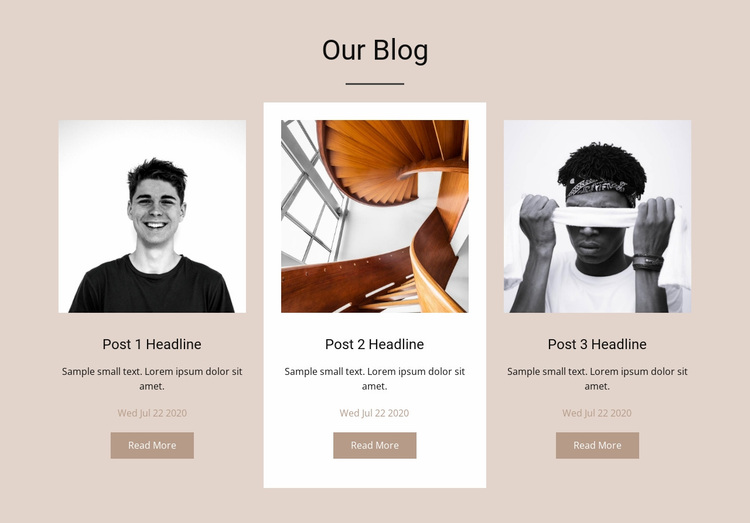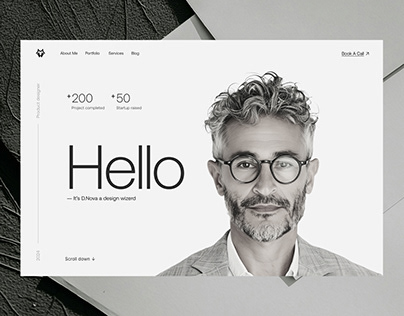Leading Tips for Developing an Impactful Website Design That Converts
In today's electronic landscape, the relevance of an impactful website design can not be overstated, particularly when it pertains to converting visitors into customers. To achieve this, one should think about a range of aspects, consisting of comprehending the target audience, prioritizing user experience, and optimizing for mobile platforms. The calculated usage of compelling call-to-actions and a well-defined visual power structure plays a crucial duty in leading customers with their journey. As we explore these essential elements, it becomes obvious that the success of your site rests on greater than simply appearance; it needs a thoughtful method to design and performance.

Understand Your Target Target Market
Comprehending your target audience is basic to efficient website layout, as it lays the groundwork for developing an appealing user experience. Recognizing who your individuals are, including their demographics, preferences, and habits, enables developers to tailor the web site's content, format, and functionality to satisfy specific requirements.
Conducting complete market research is critical in this process. Studies, interviews, and analytics can give useful insights into customer expectations and discomfort points. By assembling this data, developers can create individual characters that represent various sectors of the audience, guaranteeing that layout decisions are notified and pertinent.
Additionally, recognizing the target market helps in choosing ideal design aspects such as color design, typography, and imagery that resonate with individuals. An internet site that speaks directly to its audience cultivates a sense of connection and trust fund, urging longer gos to and greater conversion prices.
Inevitably, a user-centered approach to website style not only improves customer satisfaction but likewise supports service goals by driving involvement and commitment. By focusing on the demands and choices of the target market, an internet site can effectively serve its purpose and achieve desired outcomes.
Prioritize User Experience
To enhance the overall effectiveness of a website, prioritizing user experience (UX) is important (Website Design). A well-designed UX makes certain that site visitors can browse the website effortlessly, find info rapidly, and engage with content meaningfully. This leads to raised customer satisfaction and higher conversion prices
Begin by implementing user-friendly navigation. Menus should be logically structured, permitting customers to find key areas of the site with marginal initiative. Consistency in layout components, such as color design and fonts, cultivates experience, which is essential for maintaining customer interaction.
Additionally, take into consideration the packing speed of your internet site. A delay of simply a few secs can result in significant drop-offs, as customers are less most likely to wait on a slow-loading page. Improving photos and enhancing code can enhance efficiency and keep site visitors.
By prioritizing individual experience, you not just create a more satisfying environment for site visitors yet likewise strengthen your brand name's integrity. Inevitably, a focus on UX is an investment in the long-term success of your site.
Enhance for Mobile Tools
Enhancing for mobile phones is crucial in today's electronic landscape, where an increasing number of users access websites through mobile phones and tablets. A mobile-friendly design not only enhances customer experience yet additionally plays a substantial duty in enhancing internet search engine positions. To accomplish this, it is important to embrace a responsive design that automatically adapts to numerous display sizes and orientations.

Filling speed is another essential aspect; mobile individuals are generally much less individual and expect quick accessibility to info. Maximize pictures and leverage internet browser caching to enhance efficiency. Lastly, examination your web site on numerous gadgets and display resolutions to determine and rectify any kind of potential use issues. By focusing on mobile optimization, you guarantee that your web site remains competitive and effectively engages a more comprehensive audience.
Usage Engaging Call-to-Actions
A web site's performance usually rests on its ability to assist site visitors towards wanted actions, making compelling call-to-actions (CTAs) vital elements of layout. CTAs work as the pivotal points that direct users to engage with the site, whether that implies purchasing, registering for an e-newsletter, or downloading and install a source.
To develop reliable CTAs, clarity is paramount. Use concise language that clearly communicates the action you want the user to take. Expressions such as "Obtain Begun," "Subscribe Free," or "Store Now" not only communicate seriousness however likewise get rid of uncertainty. her comment is here The placement of CTAs is similarly essential; they ought to be tactically placed throughout the web page to guarantee they are quickly visible, particularly in high-traffic areas.
In addition, the layout of CTAs need to attract attention without being interfering. Utilize contrasting colors and clear fonts to ensure they catch attention. In addition, take into consideration utilizing directional cues, such as arrowheads or pictures, to direct users towards these buttons. By focusing on these elements, businesses can significantly boost individual interaction, driving conversions and ultimately attaining their site's goals.
Concentrate On Visual Power Structure
Efficient web site layout relies greatly on a well-structured visual pecking order that overviews individuals with content flawlessly. By arranging elements in a way that focuses on info, developers can enhance customer experience and facilitate decision-making. This includes making use of size, shade, contrast, and spacing strategically to attract focus to the most right here vital parts of a web page.
Making use of bigger font styles for headings and subheadings develops a clear distinction between various areas, enabling customers to check content effortlessly. Furthermore, using contrasting colors for switches and calls-to-action can record individual interest and urge communication. Whitespace is one more important component; it protects against mess and enables users to focus on essential messages without disturbances.
Pictures and graphics must enhance the message while likewise adhering to the well established power structure, enhancing the total message (Website Design). Uniformity in design elements, such as color design and typography, further strengthens the aesthetic power structure, making navigation intuitive

Final Thought
In verdict, effective site style requires a thorough understanding of the target market, prioritization of individual experience, and mobile optimization. The tactical use of engaging call-to-actions and a distinct aesthetic pecking order additionally improves customer involvement. By executing these principles, websites can attain greater conversion rates, making sure that style aspects not only bring in site visitors however likewise assist in seamless navigating and communication. Ultimately, a well-executed internet site style acts as an essential part in driving individual activities and accomplishing business purposes.